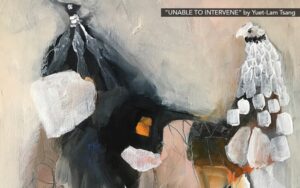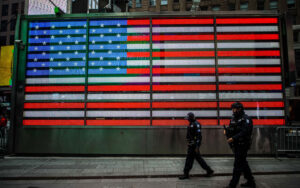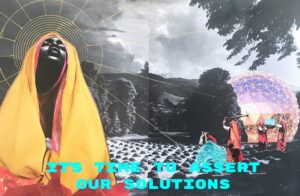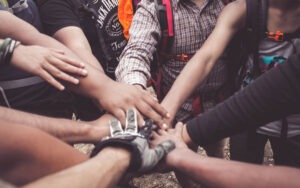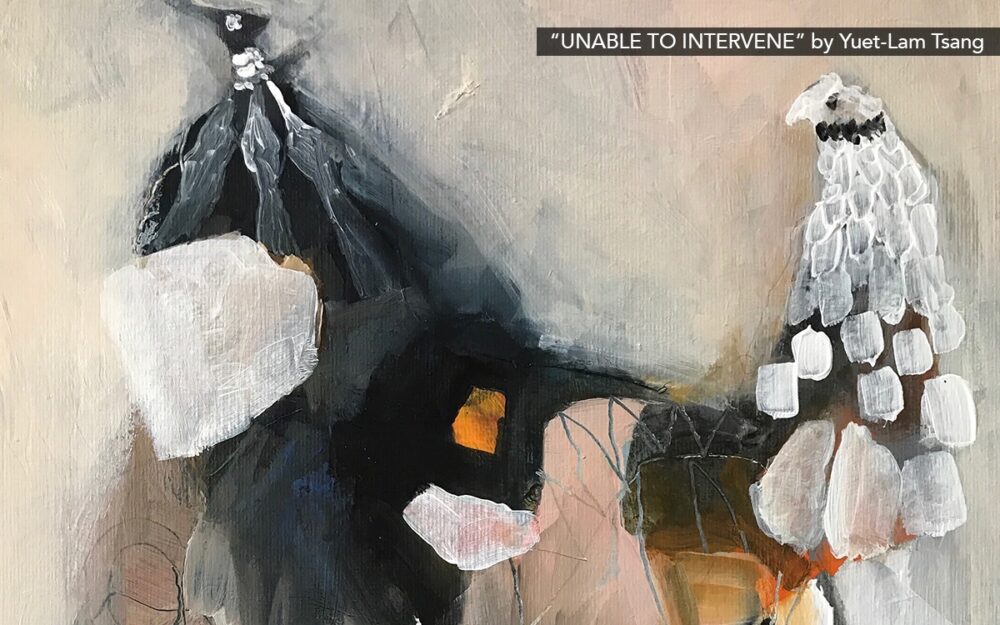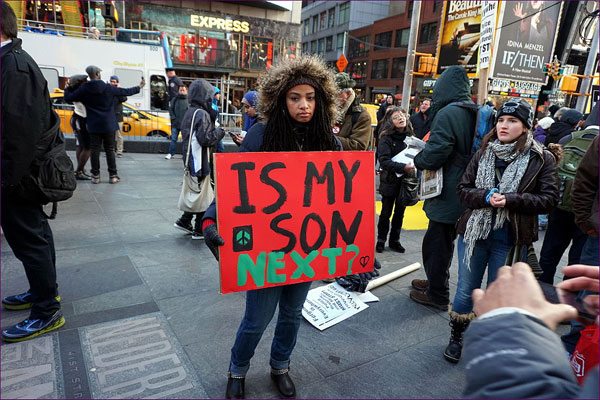
It’s almost whiplash-causing to witness the radically different responses to the Black Lives Matter and #NeverAgain movements. While BLM repeatedly talked about their leaderful model, five years after the BLM movement launched in 2013 after the 2012 murder of Trayvon Martin, it has still not been recognized for its innovative and inclusive approaches to mobilization. Meanwhile, the New Yorker ran a story Sunday, about five weeks since the Parkland school shooting, headlined, “The March for Our Lives Presents a Radical New Model for Youth Protest.”
Emily Witt describes the leaders of the march this way:
Current Stoneman Douglas students arrived at Washington in all manner of convoys…some on buses, others with their families (the march coincided with spring break). One group travelled to Washington on a plane lent by the New England Patriots. At 4:10 a.m. on Saturday, three planes carrying five hundred and sixty-seven students total departed from Fort Lauderdale. The students were whisked directly from the tarmac to the site of the rally, where they were immediately given a special place in front of the stage, where the media started gathering at seven-thirty to watch them file in. Before the rally, the student speakers came out for twenty minutes of intense questioning. The Parkland students were now joined by a coalition of speakers from all over the country…
[…]
The rally began with a song by Andra Day, who sang about “standing up for something,” backed by a children’s choir from Baltimore dressed in red uniforms. It was just after noon, the sun was shining, and the mood was ebullient.
[…]
The final speaker was Emma González. Her last speech, given at a gun-control rally in Fort Lauderdale, only days after the shooting, had made her a household name, and many of the marchers wore buttons and signs that referred to its refrain: “We call B.S.” González was dressed in a green bomber jacket covered with patches and buttons. As she stepped onstage, the crowd went wild.
Just try to imagine the BLM leaders described that way. The Parkland students were even lauded for giving space to the Black voices that have otherwise gone unheard. And, yes, that’s great, but the whole thing—the privileging of white lives, white voices, white leadership—is also part of the nauseating US race narrative that erases those voices in the first place.
Witt hints at this when she writes, “There was, in short, so much consensus about the message of the student movement that it has to be one of the least anti-establishment social movements in American history…They have been as polite and as popular as protesters can hope to be.”
In a Vox article headlined, “It’s official: March for our Lives was one of the biggest youth protests since the Vietnam War,” German Lopez writes, “For once, we are seeing a mass movement that is extremely dedicated to gun control.” Later on, he writes, “The victims of mass shootings and their families have begun putting a face on these policies…the potential to inspire more widespread and passionate empathy and sympathy through these demonstrations could crack the key problem facing the gun control movement today.” Really? What about all of those videos about black people as they are being murdered that went viral through the now-global BLM movement?
Then, there’s the flow of money to the movements. NPR reports that the Washington rally cost the March for Our Lives Action Fund $5 million, but they have “‘several million dollars’ left to continue to push for stricter gun laws and fight gun violence.” Though there are reports that Jay Z and Beyoncé donated to BLM, the different responses of entertainment stars to both movements have been noted, both in terms of endorsement and money. An opinion piece in the Guardian last month by Khanya Khonlo Mtshali captures it; reflecting on Oprah’s different responses to the movements, she writes, “In her tweet, she likened [the Parkland students] to the Freedom Riders of the 1960s who fought against segregation and racism by rising integrated buses throughout the south.” She compares that to Oprah’s statement about BLM: “In an interview with People for the film Selma, Winfrey accused the movement of lacking leadership, adding that it needed to ‘take note of the strategic, peaceful intention’ which the civil rights movement used to enforce ‘real change.’” Khonlo Mtshali concludes, “it’s disappointing that a figure as important as Winfrey was more than happy to welcome the resistance of predominantly white suburban kids but dismissed that of young black protesters asking for their humanity to be seen.”
Like a few other writers, Khonlo Mtshali also noted the online photo of a white Parkland student with the words “Don’t shoot!” on her palms. She writes, “The intentions of the picture were questionable, given that the phrase was conceived as a rebuttal against violence inflicted upon Black people at the hands of the police.” Covering the same issue, the BBC asks, “Is the new movement against gun violence that is sweeping America too white and too rich?” The article points out that “in 2016 more than 52 percent of murder victims (73 percent killed by guns) in America were black, even though black people make up 13 percent of the population.” Georgina Rannard concludes, “Protesters are being accused of hypocrisy, as some ask why they didn’t turn out for the Black Lives Matter movement, which was set up in 2013 to end police violence against black people and highlight the impact of gun violence in ethnic minority communities.”
Sign up for our free newsletters
Subscribe to NPQ's newsletters to have our top stories delivered directly to your inbox.
By signing up, you agree to our privacy policy and terms of use, and to receive messages from NPQ and our partners.
In fact, it’s so bad for Black and Latinx youth that VICE reported last month about a program in Chicago’s South Side that teaches kids how to treat gunshot wounds.
A recent PBS article tells the Parkland story from the perspective of immigrant youth. Joaquin Oliver and Martin Duque died at the Parkland school shooting. They were friends of United We Dream activist Camila Duarte, who says,
Our undocumented community has been hit by gun violence for our entire life. Many of our undocumented youth and many of the immigrant population has been coming to the United States because they’re fleeing gun violence in their own country. So, they come here, trying to get a better life, getting an education, and now they have to fear gun violence again, going to school? In our communities we see gun violence and gun wars all the time. This is something that affects the undocumented community and the community of color very deeply.
Bustle’s story moves closer to the point. Thandiwe Abdullah writes,
I do want to say that as we get justice for the Parkland kids, we also need to be getting justice for the kids—which are particularly black and brown students—who are over-criminalized, over-policed, and see guns every single day. They face that threat every single day.
It’s very problematic for everyone to not realize that gun control actually means gun control for everyone. So when we talk about gun control, who are the most people with guns? The people with the most guns are police. And you see police every day, they’re supposed to be the one protecting and serving us, yet they have these guns and no one’s telling them how to use them; they’re actually hurting us.
Finally, a New York Times article this week headlined, “They Push. They Protest. And Many Activists, Privately, Suffer as a Result.” tells the story of BLM Oakland activist Ashley Yates as she mulls over the fate of some BLM activists, especially Eric Garner’s daughter, Erica Garner, who fought relentlessly for justice for her father’s death and died in December of a heart attack. Yates recalls Garner’s “problems with money and stress.” While the movement has prioritized self-care and healing, it’s hard trying to make a country built on what Kellogg Foundation’s Dr. Gail Christopher calls the “hierarchy of human value” care about the legitimized murder of black people. Five other BLM activists have died. The Times’ John Eligon writes,
The deaths have their own unique causes. But with each fallen comrade, activists are left to ponder their own mortality and whether the many pressures of the movement contributed to the shortened lives of their colleagues.
Along with the long hours, constant confrontation and frequent heartbreak they experience, activists work for little or no pay and sometimes struggle for basic needs like food and shelter even as they push for societal change.
Yates says, “It’s absolutely scary. It’s enough to make you want to quit.”
Ceasar McDowell, Urban Planning professor at MIT and a former colleague, stresses the important of designing for the margins, those most impacted by the problem. That may be the missing piece here. Solutions that begin with the privileged tend not to work for everyone else.
Disclosure: This writer has worked closely with Black Lives Matter and United We Dream.




